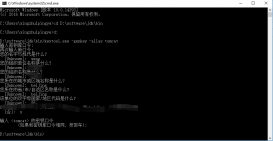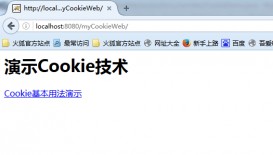java作为一门后端语言,其厉害之处在于web,大家比较熟知的各种网络应用,java都能做,那么在这个移动优先的时代,如何继续发挥java的强大呢。通常是让java作为一个app的服务端,为app客户端提供数据,做业务逻辑,所以我们用java来写接口,app客户端访问接口返回json文件进行解析,最后实现业务逻辑。
而这种方式我们通常叫做restful。
restful是一种架构思想,是一位博士生在N年前发表的一篇博士生论文,其核心思想就是前后端分离,前端通过http请求,如www.xxxx.com/demo/username/password 来访问后端的接口,然后后端将处理好的数据封装为json返回,这样,后端只需关注具体逻辑 提供接口,而前端只关心界面,提高了程序解耦性。 在移动优先的时代,restful极为重要。通常一套后台可以让多种终端访问,包括移动端,pc端。 通过restful改进的mvc 在java中比较容易实现restful的是SpringMVC框架,他提供了一套下面是一个ios访问我的java后台demo,java后台采用了springMVC和Hibernate。
|
1
2
3
4
5
6
7
8
9
10
11
12
13
14
15
16
17
18
19
20
21
22
23
24
25
26
27
28
29
30
31
32
33
34
35
36
37
38
39
40
41
42
43
44
45
46
47
48
49
50
51
52
53
54
55
56
57
|
//java端package cotroller;import java.util.HashMap;import java.util.Map;import java.util.List;import javax.servlet.http.HttpServletRequest;import jdk.nashorn.api.scripting.JSObject;import model.Student;import model.Teacher;import org.springframework.stereotype.Controller;import org.springframework.ui.Model;import org.springframework.web.bind.annotation.PathVariable;import org.springframework.web.bind.annotation.RequestBody;import org.springframework.web.bind.annotation.RequestMapping;import org.springframework.web.bind.annotation.RequestMethod;import org.springframework.web.bind.annotation.ResponseBody;import dao.Get;import dao.StudentDAO;//登陆servlet@Controllerpublic class LoginCotroller { /** * 1. value="/doLogin/{username}/{password}" 拦截 xxx/doLogin/xx/xx * 2. @ResponseBody 使用此注解将返回数据类型封装json * 3. @PathVariable("username") 截取请求1.value中{username}的值 * 4. Map<String, Object> 服务端将值放入map中再封装为json,客户端方便通过key取出value */ StudentDAO studentDAO = new StudentDAO();//调用登陆判断方法 @RequestMapping(value="/doLogin/{username}/{password}",method=RequestMethod.GET) @ResponseBody public Map<String, Object> getTeacher(@PathVariable("username") Integer username, @PathVariable("password") String password){ System.out.println("拦截了客户端json请求"); Map<String, Object> map = new HashMap<String, Object>(); if(studentDAO.loginByStudent(username, password)){ System.out.println("密码正确"); map.put("result", "1"); return map; //封装为json返回给客户端 } System.out.println("密码错误"); map.put("result", "0"); return map; //封装为json返回给客户端 }} |
|
1
2
3
4
5
6
7
8
9
10
11
12
13
14
15
16
17
18
19
20
21
22
23
24
25
26
27
28
29
30
31
32
33
34
35
36
37
38
39
40
41
42
43
44
45
46
47
48
49
|
//ios端#import <Foundation/Foundation.h>#import <stdio.h>int main(int argc, const char * argv[]) { @autoreleasepool { char oldUsername[128]; char oldPassword[128]; NSLog(@"请输入用户名 :"); scanf("%s", oldUsername); NSString *username = [NSString stringWithUTF8String:oldUsername]; //转换为NSString * NSLog(@"请输入密码 :"); scanf("%s", oldPassword); NSString *password = [NSString stringWithUTF8String:oldPassword]; //转换为NSString * //访问springMVC后台并解析返回的json数据 //定义一个异常 NSError *error; //定义请求action 使用stringWithFormat拼接字符串 NSString *url = [NSString stringWithFormat:@"http://154212l6t7.imwork.net:27063/partyOS_APP/doLogin/%@/%@", username, password]; //加载一个NSURL对象 NSURLRequest *request = [NSURLRequest requestWithURL:[NSURL URLWithString:url]]; //发送请求 将请求的url数据放到NSData对象中 NSData *response = [NSURLConnection sendSynchronousRequest:request returningResponse:nil error:nil]; //NSJSONSerialization从response请求中解析出数据放到字典中 NSDictionary *jsonResult = [NSJSONSerialization JSONObjectWithData:response options:NSJSONReadingMutableLeaves error:&error]; NSString *resultValue = [jsonResult objectForKey:@"result"]; NSLog(@"你的url是%@", url); NSLog(@"服务端返回值%@", resultValue); // oc字符串比较方法 resultValue isEqualToString:@"1"] 和java 的equlse类似 if([resultValue isEqualToString:@"1"]){ NSLog(@"登录成功!"); }else{ NSLog(@"登录失败,用户名或密码错误!"); } } return 0;} |
以上就是本文的全部内容,希望对大家的学习有所帮助,也希望大家多多支持服务器之家。
原文链接:http://www.cnblogs.com/liaohai/p/6428363.html















